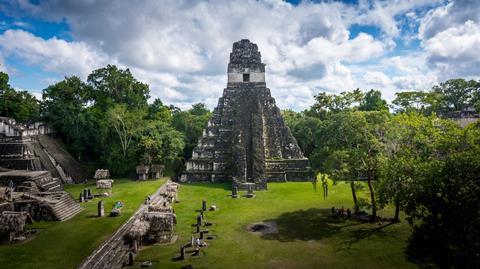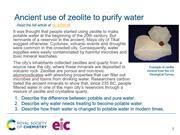How these communities were the first to use zeolites and quartz to purify water
Download this
A starter slide to use with 14–16-year-old students to provide context for the study of ways of producing potable water: rsc.li/2Hr4q2c

More than 2000 years ago, the Maya peoples were the first to use zeolites to purify water. It was presumed that people only started using zeolites to purify water at the beginning of the 20th century. But remnants of a reservoir unearthed in the ancient city of Tikal now suggest otherwise.
Tikal was one of the biggest Maya cities. Catastrophic cyclones, volcanic events and droughts were common in this crowded city. Consequently, water supplies were easily contaminated by harmful microbes and toxic mineral leachates.
The city’s inhabitants collected zeolites and quartz from a source near the city, where these minerals were deposited in volcanic rock. Zeolites are porous and non-toxic aluminosilicates with potent absorbing properties that can filter out microbes and toxins from drinking water.
Put this in context
Add context and highlight diverse careers with our short career videos showing how chemistry is making a difference and let your learners be inspired by chemists like Katty, who works as an analyst and was the 2020 chemical sciences apprentice of the year.
A team of US researchers used X-ray diffraction and accelerated mass spectrometry to determine the nature of the minerals in Tikal’s former reservoirs. Carbon dating them revealed that, since 235 BC, people filtered water in one of the main city’s reservoirs through a mixture of zeolites and crystalline quartz. Quartz was efficient enough at clearing the water, but the zeolites were crucial to remove toxins.
Use the starter slide with your class to give them a new context for their study of ways of making potable water.
Read the full story in Chemistry World.
Downloads
Ancient use of zeolites starter slide
Presentation | PowerPoint, Size 0.16 mbAncient use of zeolites starter slide
Presentation | PDF, Size 93.01 kb










No comments yet